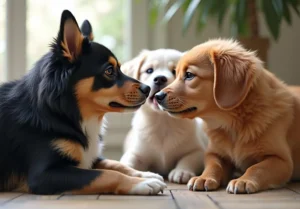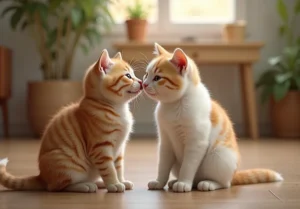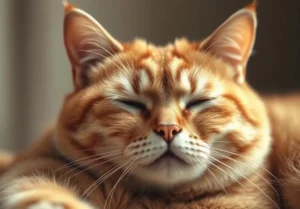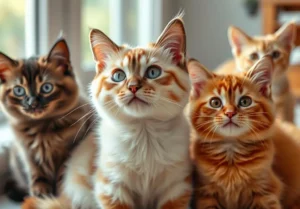Cats, with their seemingly mysterious behaviors, have a way of capturing our attention and curiosity. One such behavior that often leaves us scratching our heads is why they put their butt in the air. It’s a common sight for cat owners, but the reason behind this peculiar posture may not be immediately clear.
When a cat puts their butt in the air, it’s often a signal of comfort, trust, and communication. By understanding why cats exhibit this behavior, we can gain insight into their world and strengthen the bond we share with our feline friends.
Stretching and Flexing: The Physical Purpose
Have you ever noticed your cat raising their rear end in the air and holding that pose for a few moments? It may seem strange, but there’s actually a physical purpose behind this behavior. When a cat puts their butt in the air, they are engaging in a form of stretching and flexing their muscles.
Stretching : Just like humans, cats need to stretch their muscles to stay nimble and healthy. When a cat arches their back and lifts their hindquarters, they are stretching out their spine, shoulders, and legs. This helps maintain their flexibility and range of motion, making it easier for them to run, jump, and play.
Flexing : By raising their rear end in the air, cats are also engaging their core muscles. This posture allows them to strengthen their abdominal muscles, which are crucial for balance and stability. It’s like a mini workout for your feline friend!
Next time you catch your cat in this peculiar pose, remember that they are just taking care of their physical health through stretching and flexing those muscles. It’s their way of staying fit and agile in their daily adventures around the house.
Scent Communication: Marking Territory
Did you know that cats have scent glands located in their hindquarters that they use to communicate with other cats and mark their territory? When a cat puts their butt in the air and exposes these glands, they are engaging in a form of scent communication.
Marking Territory : Cats are territorial animals by nature, and they use scent marking as a way to establish boundaries and communicate with other felines. By raising their rear end and releasing pheromones from their scent glands, cats are leaving behind a signature scent that signals to other cats that this space belongs to them.
Communication with Other Cats : The scents released from a cat’s hindquarters can also convey information about their mood, reproductive status, and overall well-being to other cats in the area. It’s like leaving a personalized message for their feline friends to interpret.
So, the next time your cat presents you with their raised rear end, remember that they are engaging in a sophisticated form of communication through scent marking. It’s their way of navigating the social world of cats and asserting their presence in their territory.
For more information on cat behavior and communication, you can check out this informative guide from the American Humane Society: Understanding Cat Behavior.
Invitation to Play: Body Language
Cats have a unique way of communicating their desire to play through their body language. When a cat puts their butt in the air, it’s like they’re waving a flag saying, “Let’s have some fun!” This posture is a clear invitation for interaction and engagement. If your kitty is presenting their behind to you, it’s a sign that they’re ready for some playtime. So grab a toy and join in on the fun!
Sign of Trust: Vulnerability and Comfort
When a cat raises their hind end in the air, it may seem like an odd position, but it actually signifies a deep level of trust, vulnerability, and comfort. By exposing their belly and rear end, cats are showing that they feel safe and secure in your presence. This posture is a way for cats to feel relaxed and at ease, indicating that they trust you completely. So next time your feline friend strikes this pose, know that they feel truly comfortable and safe with you.
- Extra Tip: Cats may also put their butt in the air as a way to leave their scent behind on surfaces, marking their territory with their pheromones. This behavior is known as scent marking and is a way for cats to establish their presence in their environment.
Grooming and Hygiene: Accessible Areas
Cats often put their butt in the air as a way to groom hard-to-reach areas, such as their lower back and tail base. This posture allows them to access these areas more comfortably and effectively, ensuring they can maintain their hygiene and cleanliness. By arching their back and lifting their rear end, cats create better access to areas that might be challenging to reach with just their tongue. This unique stance also helps distribute their natural oils throughout their fur, keeping it healthy and shiny.
Attention-Seeking Behavior: Seeking Affection
When your cat displays the butt-in-the-air posture, it could be a sign that they are seeking attention, affection, and physical contact from you. By presenting their hindquarters, cats are essentially inviting you to engage with them. This behavior is often seen as a friendly gesture and an indication that your feline friend is looking for some extra love and interaction. So, if your cat greets you with their butt up in the air, feel free to give them some pets and scratches behind the ears to make them feel appreciated.
Additional Insight: Cats might also engage in the butt-in-the-air behavior when they are feeling playful and ready for a chase. This posture can signal to other cats or even their human companions that they are in a playful mood and open to engaging in interactive games. So, if your cat strikes this pose during playtime, consider grabbing a toy and joining in on the fun.
Playful Behavior: Preparing for Pouncing
Have you ever noticed your cat getting into that signature pose with their butt in the air? It’s not just a random quirk; it’s actually a sign that they are gearing up for some playful behavior. When a cat puts their butt in the air, it often means they are getting ready to pounce on a toy, a piece of string, or even you!
This posture is a classic precursor to interactive play, where your feline friend is preparing to engage in a fun game with you or another pet. By arching their back and lifting their hind end, cats are getting into the perfect position to launch themselves forward and playfully attack their target. So, next time you see your cat in this position, grab a toy and join in the fun!
Biological Instincts: Hunting and Predatory Behavior
Cats are natural hunters, and their butt-in-the-air posture is closely linked to their predatory instincts. When a cat raises their rear end high in the air, it mimics the stance they would take when hunting prey in the wild. This behavior allows them to prepare for a quick and efficient pounce on their target, whether it’s a mouse, a bird, or a toy.
By arching their back and lowering their front end, cats are able to focus their energy and attention on their prey, ready to strike at a moment’s notice. This instinctual behavior is deeply ingrained in their DNA, harkening back to their days as skilled hunters in the wild. So, the next time your cat adopts this posture, remember that they are tapping into their natural instincts and embracing their inner predator.
Additional Insight:
- Cats also raise their rear end to show submission or to display their trust in you. It’s a vulnerable position for them, so when they do this, it’s a sign that they feel comfortable and safe in your presence.
Fun Fact: Tail Positions and Communication
Have you ever noticed how cats use their tails to communicate with each other and with us humans? It’s fascinating to observe the different tail positions and what they signify. When a cat holds its tail high in the air, it’s actually a sign of confidence and contentment. This posture often indicates that your feline friend is feeling happy and at ease in their environment. On the other hand, a tail held low or tucked between the legs can signal fear or anxiety.
Additionally, when a cat arches its back and raises its hindquarters, it’s known as the “elevator butt” position. This behavior is often seen during playtime or when a cat is feeling particularly playful. It’s a way for your furry friend to invite you to interact and have some fun together. So, next time you see your cat with their butt in the air, it might just be their way of saying, “Let’s play!”
And as a bonus tip, remember that slow, gentle blinking from your cat is a sign of affection and trust. So, if your feline companion gives you a slow blink while in the “elevator butt” position, they’re showing you just how much they love and trust you. Isn’t that heartwarming?
Remember, understanding your cat’s body language can enhance your bond and communication with them. It’s like learning a secret feline language that only true cat lovers can decipher.
For more insights on cat behavior and communication, check out this helpful resource from the American Society for the Prevention of Cruelty to Animals (ASPCA) on Cat Behavior Tips and Training: ASPCA Cat Behavior Tips and Training
Alex, a passionate animal lover, has experience in training and understanding animal behavior. As a proud pet parent to two dogs and three cats, he founded AnimalReport.net to share insights from animal experts and expand his knowledge of the animal kingdom.




